

A CANADIAN SUPERFRUIT

















Turn to Urschel for all of your size reduction needs. High volume or batch processing, each machine is crafted to meet your requirements. Production-proven operation. Stainless steel, sanitary design. Precision cutting. Dependable, rugged equipment backed by solid service for the long life of your machine.
Explore slices, dices, granulations, down to microdimensions in pastes and purees.
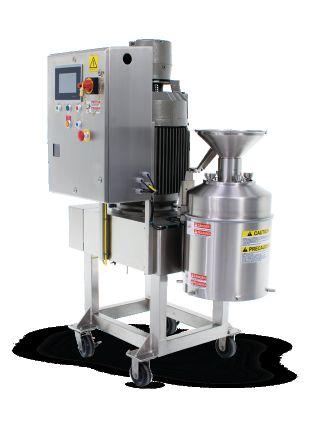
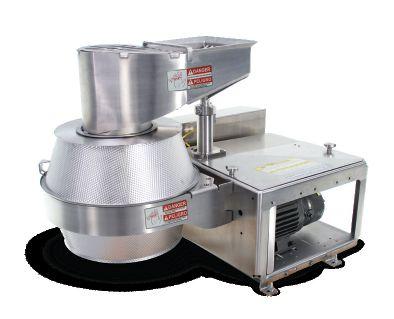

/
JUNE/JULY 2024 • VOL. 84, ISSUE 3
Reader Service
Print and digital subscription inquiries or changes, please contact Angelita Potal, Customer Service
Tel: 416-510-5113 Fax: 416-510-6875
Email: apotal@annexbusinessmedia.com
Mail: 111 Gordon Baker Rd., Suite 400, Toronto, ON M2H 3R1
ED ITOR | Nithya Caleb ncaleb@annexbusinessmedia.com 437-220-3039
ASSOCIATE ED ITOR | Ojasvini Parashar oparashar@annexbusinessmedia.com 416-510-5206
ASSOCIATE PUBLISHER | Kim Barton kbarton@annexbusinessmedia.com 416-510-5246
MEDIA DESIGNER / TEAM LEAD | Brooke Shaw bshaw@annexbusinessmedia.com
ACCOUNT COORDINATOR | Barb Vowles bvowles @annexbusinessmedia.com 416-510-5103
AUDIENCE DEVELOPMENT MANAGER | Anita Madden amadden @annexbusinessmedia.com 416-510-5183
GROUP PUBLISHER/VP SALES | Martin McAnulty mmcanulty@annexbusinessmedia.com
CEO | Scott Jamieson sjamieson@annexbusinessmedia.com
Publication Mail Agreement No. 40065710
Subscription rates
1-year
States/Foreign – $163.15 All prices in CAD funds
Food in Canada is published 6 times per year by Annex Business Media. Occasionally, Food in Canada will mail information on behalf of industry related groups whose products and services we believe could be of interest to you. If you prefer not to receive this information, please contact our Audience Development in any of the four ways listed above.
Annex Privacy Officer Privacy@annexbusinessmedia.com 800-668-2384
No part of the editorial content of this publication can be reprinted without the publisher’s written permission @2024 Annex Business Media. All rights reserved. Opinions expressed in this magazine are not necessarily those of the editor or the publisher. No liability is assumed for errors or omissions.
Mailing address
Annex Business Media 111 Gordon Baker Rd., Suite 400, Toronto, ON M2H 3R1 Tel: 416-442-5600 Fax: 416-442-2230
ISSN 1188-9187 (Print) ISSN 1929-6444 (Online)







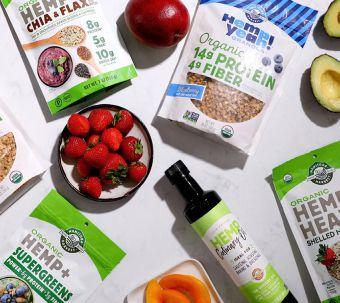


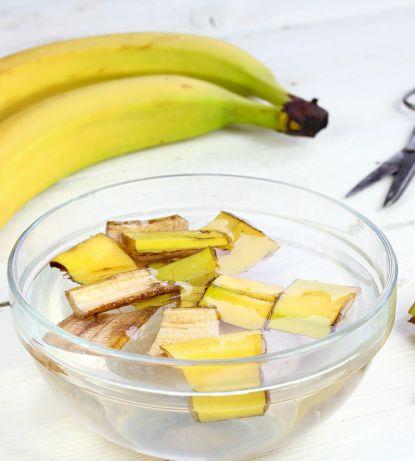
Are you ready for reporting to the federal plastics registry?
Less than 10 per cent of plastics in Canada are recycled, with the rest ending up in landfills and the environment, harming wildlife and damaging habitats. To ensure plastics is kept out of landfills and environment, the federal government has launched a new federal plastics registry, a tool to compel producers and other companies across the plastics value chain to help monitor and track the material from the time it is produced up to its end of life.
Federal registry
The registry requires plastic resin manufacturers, producers of plastic products, and service providers to report each year on the quantity and types of plastic they put on the Canadian market and how that plastic moves through the economy. This tool will provide Canadians with data that will identify opportunities for action to reduce plastic waste and pollution, as well as help monitor progress over time. Plastics producers will have to report the quantities they place on the Canadian market on an annual basis. The government has identified 23 types of resin per the North American Product Classification System, including virgin fossil-based conventional resin, virgin biobased conventional resin, post-consumer recycled resin, and post-industrial recycled resin that need to be reported. These can be in the form of packaging, singleuse or disposable plastic (e.g. clamshell
containers, takeaway cups, foam trays, rigid ring carriers, bags, and single-serve pods), electronic and electrical equipment, tires, transportation, construction, agriculture and horticulture, fishing and aquaculture, as well as apparel.
When it comes to packaging, producers must report on both rigid and flexible packaging as well as unfilled (e.g. rolls of cellophane) and filled packaging.
Implementation timeline
Reporting will be phased in over time and by sector. Reporting will start in September 2025. Producers must report on the quantity of plastic imported, manufactured, and placed on the market in the three categories of packaging, electronic and electrical equipment, and single-use or disposable plastic products for the 2024 calendar year.
In 2026, reporting requirements for resin manufacturers and importers will be added, as well as reporting on plastic placed on the market for the remaining categories. Additionally, reporting on plastic waste generated at industrial, commercial, and institutional (ICI) facilities, plastic collected at end-of-life, as well as plastic sent for diversion and disposal for some categories, will be introduced in 2026.
Exceptions
According to Environment and Climate Change Canada (ECCC), an entity is exempt from reporting if they:
Nithya Caleb

• manufacture, import, or place on the market less than 1000 kg of plastic products or packaging annually;
• generate less than 1000 kg of packaging and plastic product waste at their ICI facility yearly; and
• manage less than 1000 kg of plastic via the service provider activities. It is important to note that the exemption is applied to production, waste generation, and management separately. For instance, a company may produce less than 1000 kg of plastic products but generate more than 1000 kg of plastic waste. In that case, the company needs only to report on the waste generated. ECCC is preparing a guidance document to aid in reporting. It is also developing a new platform for reporting to the registry. According to ECCC, the system is being designed to handle bulk uploads of data to reduce administrative burden of reporting. It invites stakeholders to send their data experts to IT/technical working group meetings that’ll be held throughout this year. User testing of the IT system is scheduled to take place in the second half of 2024. It is hoped the federal plastics registry will support the Canada-wide Action Plan on Zero Plastic Waste by providing accessible, consistent, and robust plastic data. If you have any questions about the registry and the reporting timelines, please email me.
Nithya Caleb ncaleb@annexbusinessmedia.com
Nestle launches companion foods for GLP-1 drug users
Nestle is introducing Vital Pursuit, a new line of foods intended to be a companion for GLP-1 weight loss medication users and consumers focused on weight management. The products are high in protein and are portion-aligned to a weight loss medication user’s appetite. Vital Pursuit is the first food brand from Nestle intended for GLP-1 users. Vital Pursuit products will be available in a variety of frozen formats such as bowls with whole grains or protein pasta, sandwich melts, and pizzas. Vital Pursuit also includes gluten-free options, and several air-fryer ready items for added convenience.
News> file

Innodal wins 2024 Governor General Innovation Award
Quebec-based Innodal receives the 2024 Governor General Innovation Award for its anti-Listeria solution, Inneo. Inneo is the first antimicrobial protein approved by Health Canada. It acts as a shield and eliminates the risks associated with contamination by Listeria monocytogenes in a variety of food products. The Governor General’s Awards for Innovation are presented to companies whose innovations are exceptional, transformative and have a positive impact on the quality of life in Canada.
Maple Leaf Foods to close Brantford plant
Maple Leaf Foods is closing its Brantford, Ont., plant and consolidating most of its further processed poultry production into its existing plant network. Earlier this year, the company determined that this 100-year-old facility would likely require significant ongoing investment to continue long-term operations. The closure of the plant will be completed
in a phased manner to maintain business continuity and meet customer demand. Maple Leaf Foods will also work with the community of Brantford to seek alternate uses for the property.
Saputo
appoints new CEO
Saputo appoints
Carl Colizza, currently president and COO of North America, as its new president and CEO, effective August 9, 2024.

Lino A. Saputo, board chair and company president and CEO will transition from his current position to the role of executive chair of the board. Since joining Saputo in 1998, Colizza has held key leadership positions in engineering, operations, business development and strategy.

Lactalis Canada launches plant-based beverage
Lactalis Canada introduces Enjoy, a new plant-based beverage brand. The plantbased brand offers 8 g of protein derived from peas per 250 ml. It features six SKUs: unsweetened oat, unsweetened oat vanilla, unsweetened almond, unsweet-

ened almond vanilla, unsweetened hazelnut and unsweetened hazelnut and oat.
Federal govt. invests over $1.7M
in Italpasta
The Federal Economic Development Agency for Southern Ontario (FedDev Ontario) invests more than $1.7 million in Italpasta, Brampton, Ont. The investment will help the family-owned and operated company replace old equipment with a production line that will triple capacity and reduce the company’s carbon footprint by 20 per cent.
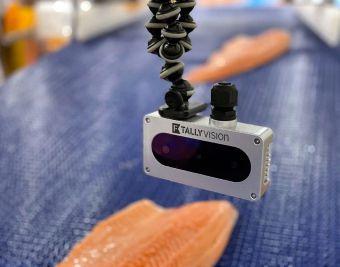
CFIN awards $386K to four foodtech startups
The Canadian Food Innovation Network (CFIN) awards $386,078 to four foodtech projects through the organization’s Innovation Booster Program. Industry will match these funds to create projects valued at $772,154. The Innovation Booster funding recipients are ThisFish for automating seafood inspection with computer vision technology; Knead Technologies for scaling and quantifying food rescue; Skygauge Robotics for
Dr. François Bédard, CTO, Innodal, Governor General Mary Simon, and Laurent Dallaire, CEO, Innodal.
Carl Colizza
ThisFish’s TallyVision uses smart cameras and computer vision to automatically inspect seafood in processing plants.
developing drones for large food processing tank inspections; and Local Line for creating a local food sourcing network.
Bimbo Canada to close a Quebec bakery
Bimbo Canada plans to close its bakery in Lévis, Que., the week of July 1, 2024. Products made at the facility will be baked at other primarily Quebec-based bakeries with available capacity. The bakery employs approximately 95 associates. Affected associates will receive severance packages, as well as personal counselling and ongoing outplacement services and workshops. Additionally, associates will be encouraged to apply for open positions in other bakeries in the region.
Hain Celestial sells Thinsters
The Hain Celestial Group sells its Thinsters cookie business to J&J Snack Foods. The all-cash transaction optimizes the company’s better-for-you portfolio and will be used to pay down company debt. In September 2023, Hain introduced Hain Reimagined, the company’s multi-year transformation plan to pivot the business to growth. The Thinsters divestiture is part of that plan.
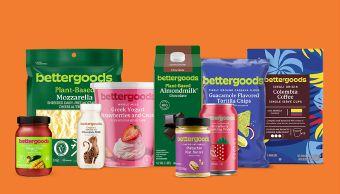
Walmart launches new private label brand
Walmart unveils its first private label brand in 20 years. Bettergoods is a line of chef-inspired foods in three categories: plant-based; dietary-specific products; and ‘culinary experiences’ such as creamy corn jalapeno chowder and pasta from Italy. Walmart expects to introduce 300 products by fall, including frozen foods, dairy items, snacks, beverages, pastas, soups, coffee and chocolate. The prices range from under US$2 to under US$15, with most products costing under US$5.

NaturSource opens new facility
The Quebec-based family business NaturSource, which specializes in manufacturing nut-based snacks and salad toppers, opens a new facility in Dorval. Marc Doret, Dorval’s mayor, Nishant Sharma, president of the West Island of Montreal Chamber of Commerce, Robert Atallah, president of Commerce Dorval, and Nathalie Robitaille, managing director of PME MTL Ouest-de-l’Île, attended the opening ceremony. Company founders Garry and Trudy Oberfield have also officially passed on the torch of managing the 44-yearold NaturSource to their son Mitch.
B.C. gets new milk processing plant
A new dairy production plant is coming to the Fraser Valley to help meet growing demand for dairy products. The province is contributing as much as $25 million to help Vitalus Nutrition expand into a 143,500-sf facility in Abbotsford. This new plant will support milk producers in the region and create as much as 100 jobs. The larger manufacturing plant will also increase B.C. processing capacity by 50 per cent to 1.4 billion L annually.
Keurig Dr Pepper Canada enters the sports hydration category
Keurig Dr Pepper Canada signs an exclusive long-term agreement with Cab Can for the sale and distribution of Electrolit, a premium hydration beverage, in Canada. This partnership marks KDP Canada’s entry into the sports hydration and dehydration beverage category.
NEW PRODUCTS
Ruskin launches new damper
Ruskin introduces BTD830, a rectangular bubble tight damper for applications where extremely low leakage is required. The BTD830 is bubble tight, according to AMCA 500-D standard with a maximum velocity of 4,000 FPM, a static pressure of 2.5 kPa and a temperature range of -40 to 121 C. Damper sizes range from 6 x 6 in. to 36 x 16 in. The flanged dampers can be mounted for horizontal or vertical airflow, and standard or custom mounting hole configurations are available. Optional features include square flanges, a mil-spec frame or blade and mil-spec axle or finish. www.ruskin.com

Provisur debuts new separation systems
Provisur unveiled a new soft tissue separator. The STS 2000 enables “efficient” separation of beef, pork, and poultry while eliminating tendons, cartilage, bone fragments, and sinew. It can also be used for the clean separation of components in other products like avocados destined for use in guacamole. It is suitable for depacking when, for example, the reprocessing of defective articles becomes necessary, or when the best-before date has passed. Provisur also launched a redesigned Bone Cannon separation system that offers greater meat recovery. The company offers an entry-level separation system, the SME 1830. The machine is compact and lean. It is suitable for MDM and MSM from beef, pork, poultry, and delivers the material for sausages and nuggets. Additionally, it can handle fish and fruit. www.provisur.com
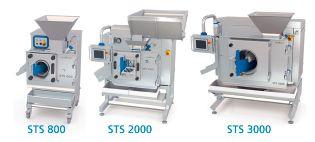

NHistory of safe use for novel foods
Dr. Amy Proulx
ew ingredients are a wonderful opportunity for food product innovation. With so much interest in global culinary exploration, assessment of novelty and food safety becomes a critical factor for successful commercialization and adoption into the Canadian food value chain. Section 4 of the Canadian Food and Drugs Act requires manufacturers to ensure their products are free from contamination and fit for human consumption. Thus manufacturers must perform the due diligence of evaluation of risk and submission of evidence to Health Canada.
Health Canada has a well-defined strategy for evaluating the History of Safe Use for new food ingredients. First, there needs to be long-term consumption for multiple generations by a large and diverse population. The proposed use must be similar to traditional use and similar to how it’s intended to be used in Canada. Lastly, there should be no history of adverse health effects associated with consumption of the ingredient.
Manufacturers need to provide comprehensive documentation supporting the History of Safe Use claim. This can include geographical regions where the ingredient has been consumed, the duration of consumption, population groups consuming it, traditional uses and F&B applications, typical amounts ingested and any scientific evidence supporting safety. Nutritional composition and digestive impact studies are also highly regarded. Once an application is made, Health Canada will assess the evidence provided to determine if it meets the criteria. Typically these products are then listed on the official List of NonNovel Determinations for Food and Food

Ingredients. There are cases where the History of Safe Use becomes complex. Using case studies can inform future strategies, so let’s dig into a few examples.
Two-eyed seeing
Foods traditionally used by Indigenous communities are very encouraging. When science interfaces with traditional knowledge, the term, ‘two-eyed seeing,’ is used. This comes from the Mi’kmaq teaching tradition that modern science can interface with indigenous teaching. When two eyes see together, they can see better. When Health Canada investigates the history of safe use, there needs to be a strong narrative strategy to explain the context and application. Health Canada has historically focused on scientific literature for documenting safe use. In many of these new cases the narrative of safe use comes from indigenous knowledge keepers and elders. Health Canada allows the affidavit and narrative of at least two or more individuals with extensive knowledge of the use of the product as evidence. However, technical documentation is still preferred. With this in mind, it is important that as much technical observation of harvesting and processing be performed in conjunction with the safe use narrative. Have someone make technical measurements of processing parameters, pH, time and temperature, moisture and water activity, storage conditions, etc. to include in the assessment.
Changes in conditions
The biggest challenge with history of safe use narrative is that many indigenous foods are negatively impacted by pollution and climate change. This means the composition and risk profile of the
product today may not be the same as it was previously. For example, traditional fish and shellfish harvesting and processing methods are impacted negatively by atypical algae blooms and pollution. History of safe use implies conditions in the past are the same as current, but that is not the case. Using the right technical strategy can overcome potential risk.
Technology such as ELISA or lateral flow testing for algal toxins like saxitoxin are essential in this situation.
Food waste reduction is another intriguing case. Many food waste streams are derived from peels, stems and residuals that are immediately adjacent to the food historically consumed. However, the residual material is now being considered as novel food. For instance, been high profile groups like Ikea are promoting banana peels as a vegan substitute for bacon. There is history of safe use, as it is common to consume steamed or boiled bananas with the peel in many countries. The original hazard identification for bananas would presume low risk for residual pesticides because the peel is removed. Banana growers typically treat product by bagging large bunches, and inserting pesticide into the enclosed bag system, or through use of post-harvest dip application. Residual fungicides and organophosphate insect control agents could remain on the peel at levels that would not be observed in the typically consumed product.
History of safe use must be performed with comprehensive hazard identification and risk assessment. It’s still quite possible to reduce and mitigate the risk in this process. History of Safe Use practices, when done with food safety in mind, can bring diversity and innovation to the Canadian consumer.
Dr. Amy Proulx is professor and academic program co-ordinator for the Culinary Innovation and Food Technology programs at Niagara College, Ont. She can be reached via email at aproulx@niagaracollege.ca.
Photo © svehlik/ Getty

TPerformance review season for the Safe Food for Canadians Act
Katrina Coughlin
he Canadian Food Inspection Agency (CFIA) is currently undertaking the scheduled fiveyear review of the Safe Food for Canadians Act (SFCA), including a public consultation period that ran from March to May 2024. While the consultation is now closed, the review is ongoing and has created opportunities for discussion between regulators and the industry.
Purpose of the review
The purpose of the review is to assess if SFCA is meeting its objectives, including improving food safety and consumer protection oversight across all food commodities; having effective, streamlined, and strengthened legislative authorities across food commodities; and enhancing market access opportunities for Canadian food industry. The five-year review is required under section 68 of the Act.
Scope of the review
The scope of the SFCA review is the provisions and operations of the Act itself, including resources and enforcement. While the review does not directly include an assessment of the Safe Food for Canadians Regulations (SFCR), it is nearly impossible to discuss the Act without considering the operation of the Regulations, which are the true drivers of resource use and enforcement under SFCA
CFIA acknowledged that comments related to SFCR could be made in the public consultation, but only “if they relate to gaps or issues associated with SFCA… or any of its authorities.”
Having now completed the planned stakeholder early engagement, CFIA is analyzing comments and developing the final report for submission to Parliament,
targeted for April 2025. The report may be the basis for future legislative changes.
Coronavirus pandemic’s impact
The first five years of SFCA saw circumstances that no one would have predicted in 2012 when the Act was first adopted, not least among them, a global pandemic. Now there is an opportunity
the Act or regulations; however, the scope is limited by SFCR, despite the broad language about exemptions in SFCA CFIA also relied on tools outside the legislative framework, such as policies and enforcement flexibilities, to address concerns that arose during the pandemic but did not amount to a shortage issue (e.g. labelling). Could changes to the legislative framework better equip regulators to respond to emergencies in the future?
Now there is an opportunity to reflect and consider the extent to which SFCA supported (or hindered) the introduction of flexibilities during the COVID-19 pandemic and whether it is working as intended to support the food industry and ensure a safe food supply for Canadians.
to reflect and consider the extent to which SFCA supported (or hindered) the introduction of flexibilities during the COVID-19 pandemic and whether it is otherwise working as intended to support the food industry and ensure a safe food supply for Canadians.
For example, CFIA used Ministerial Exemptions, available under Part 8 of SFCR to alleviate a shortage in food supply, as one tool during the pandemic. Ministerial Exemptions allow for exemptions from
SFCA implementation
Aside from acute considerations brought to light by the pandemic, COVID19 undoubtedly affected the overall implementation of SFCA framework, especially inspections. SFCA was designed to establish an outcome-based regulatory framework. However, based on the discussions we’ve observed, a significant focus for industry in this SFCA review is a seemingly inconsistent, prescriptive approach to inspection activities contrary to the intent of the Act.
SFCA’s outcome-based approach was largely hailed by CFIA and stakeholders as a flexible, results-driven approach that would enable consistency across food commodities while supporting industry innovation and adoption of new best practices. This may be true in theory, but as with so many things, the devil is in the details. In this case, the details are SFCR, CFIA guidance and policies, and inspectors. Whether this can be addressed through legislative changes arising from the five-year review of the Act remains to be seen.
Katrina Coughlin is a partner in the Ottawa office of Gowling WLG, which specializes in food and drug regulatory law. Contact her via email at katrina.coughlin@gowlingwlg.com.

OExploring Ontario’s food ecosystem
Alex Barlow
ntario is often considered the economic engine of Canada, with a diverse economy and a rich food and beverage manufacturing sector. The province is also home to the Advanced Manufacturing Cluster, numerous research centres, postsecondary institutions, multinational companies, and scientific and technical experts. This has led to a thriving food technology sector innovating in areas such as automation and robotics, food safety, supply chain management, and new product development.
Ontario’s F&B manufacturing sector
According to Invest Ontario, the province’s food and beverage manufacturing sector is the third largest in North America. With $48 billion in revenues and over 4,500 establishments, the sector provides 18 per cent of Ontario’s GDP and employs more than 104,800 people in the province. Additionally, food and beverage manufacturers in Ontario benefit from a dynamic food community, with access to local supply chain partners, ingredient and equipment suppliers, transportation and distribution companies, and a vast consumer market.
Efficiency through automation
Ontario’s F&B manufacturers are looking for ways to increase efficiency and profitability, while keeping supply chains reliable and ensuring products are innovative and safe. Adding automation or robotics is one way through which companies can optimize their systems, helping with labour challenges and freeing up employees to perform more valuable tasks. For instance, Cyberworks Robotics, Markham, Ont., offers autonomous self-
driving technology for material handling forklifts and tow-tuggers, and industrial floor scrubbers that can increase efficiency.
Adapting to consumer needs
Food companies are also looking for assistance adapting to consumer demands for greater sustainability, food waste management, and transparency. To help with this challenge, Toronto’s Index Biosystems has developed microscopic barcodes from baker’s yeast called BioTags that can track the movement of complex ingredients and food products through the supply chain. By giving food companies the ability to analyze data, Index Biosystems hopes to enable them to more easily identify and fill sustainability, food waste and food safety gaps in their supply chain.
Meanwhile, CarbonGraph has created an automated life-cycle assessment software combined with a digital platform that allows food companies to trace their carbon footprint and product sustainability and build co-operative sustainability models with supply partners.
“The food sector has a big environmental impact but it’s also innovating so much to reduce that impact, and CarbonGraph is a new way to highlight some of those innovations that have gone relatively unnoticed by customers and the public,” the company’s co-founder and CEO Sam Anderson said.
Innovation through R&D
Ontario has a strong academic and R&D history, with world-renowned schools, food incubators, and research centres offering expertise in agriculture, food, science, and technology. There are approximately 24 post-secondary institutions offering food and beverage programs in Ontario and
Ontario is home to a thriving foodtech sector innovating in everything from robotics and digitalization to cellular food and plant-based proteins.
approximately 65,100 graduates of STEM programs in the province annually. With this established infrastructure for food, agriculture and technology research, there’s also a wealth of food innovation.
Biotech companies Myo Palate and Evolved Meats are developing cultivated pork through cellular food techniques, while Liven Proteins is working on animalfree protein ingredients produced through precision fermentation. Toronto-based New School Foods is developing novel technology to produce plant-based wholecut seafood alternative protein that it says looks, cooks, tastes, and flakes like salmon.
Biofect Innovations uses advanced biotech combined with traditional fermentation to create microbes for producing food ingredients that are identical to their natural counterparts.
The Toronto-based company is currently working on producing brazzein, a natural protein that has potential as a sweetener.
“What’s really thrilling is the way this opens doors for innovation. We’re not just talking about making new products, but also about revolutionizing the entire process of how certain ingredients are brought to market,” Christian Delos Santos, co-founder and CEO of Biofect Innovations said.
Alex Barlow is vice president of programs for the Canadian Food Innovation Network (CFIN). Visit www.cfin-rcia.ca to become a CFIN member for free and learn more about its programs.

Plant-based foods is A VERSATILE choice for all
Variety is the spice of life when it comes to plant-based foods and product developers are continually creating new recipes
— BY KAREN BARR —
Avariety of factors are inspiring Canadians to try plant-based foods. Many are motivated by the health benefits of a plant-rich diet while reducing the intake of animal products. This shift is not only beneficial for personal health, but also for the environment and animal welfare. For some, it is a matter of religious beliefs, making plant-based foods a versatile choice for all.
“In 2018, there was a market explosion of plant-based products driven by the excitement around brands like Beyond Meat’s entry into Canada,” says Leslie Ewing, executive director of Plant-Based Foods of Canada, the collective voice for companies that make and market plant-based food products. “Plant-based foods moved from being a fringe segment within grocery stores to something more normalized with options in almost every category in the store. Today, consumers are becoming more discerning, challenging companies to innovate and bring to market new options and varieties of plantbased foods.”
Ewing points out other benefits of consuming plant-forward foods and meat and dairy analogues.
“Plant-based foods are part of the solution to some of the world’s most pressing issues, including environmental sustainability and food insecurity,” she highlights.
Ewing says it is widely recognized a food system shift that includes more plant-based foods, which are generally easier on people and the planet through their lower land and water impacts, is necessary to meet our climate targets.

Photo © Big Mountain Foods
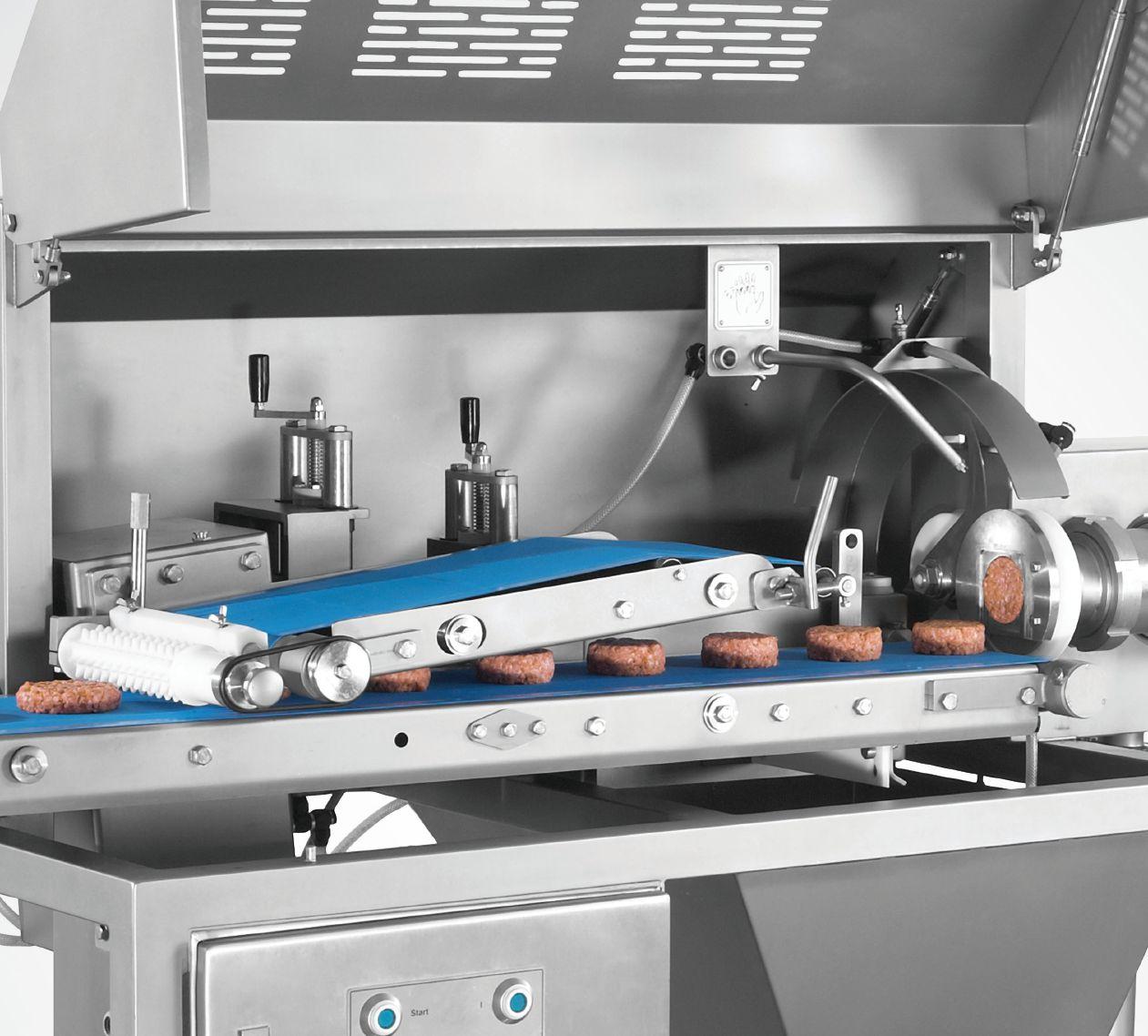
n
n
n
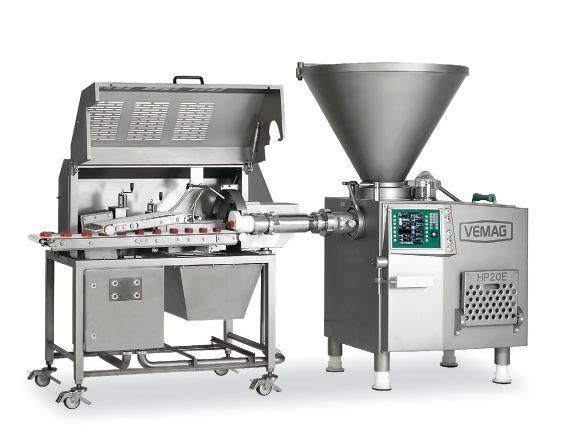


According to the “Plant-based protein market: global and Canadian market anal ysis 2019” report by Agri-Food Innovation Council, 40 per cent of Canadians were actively trying to incorporate more plantbased foods into their diets. A 2023 survey by Agri-Food Analytics Lab, Dalhousie Uni versity, found 61 per cent of the respondents reduced their meat consumption and 42 per cent declared consuming a dairy alternative.
Product innovations
Big Mountain Foods, a Vancouver-based company, has been at the forefront of plant-based food innovation since its establishment in 1987 by Kimberly Chamberlain. Their products include the world’s first soy-free tofu made with Canadian-grown fava beans. Canada is one of the largest producers of pulses and lentils globally, including beans, peas, lentils and chickpeas. The product quickly became a bestseller due to its high protein content of 64 g per pack.
Other products from Big Mountain Foods include Lion’s Mane Mushroom Crumble, a savoury and versatile product to add to soups, salads, tacos and pasta. Then, there is the Lion’s Mane Burger.
“The Lion’s Mane Mushroom Burger comes in a grill-worthy, umami-packed patty and isn’t just perfect for burgers, but also wraps and even as a topping for pizza,” says Jasmine Byrne, COO at Big Mountain Foods. “Mushrooms have been gaining more popularity, with Lion’s mane mushrooms especially making their case as one of nature’s best superfoods.”
Plant forward snacks
Three Farmers, Saskatoon, Sask., works directly with farmers to create nutrition-rich snack foods.
“We started out in a niche market back in 2014, offering betterfor-you snack products for consumers concerned about ingredient lists and looking for high-nutritional products,” says Three Farmers co-founder Natasaha Vandenhurk. “While we were originally placed in the natural aisle in grocery stores, 10 years later, we are in line with conventional products and a mainstream item for consumers.”
Three Farmers developed crunchy Lentil Toppers for salads, soups, stews and more. Each serving has 12 g of plant protein and 10 g of fibre. The Bacon Flavour Lentil Crunchy Topper flies off the shelves.
“People equate bacon with a topping. This is a way to add protein without adding meat,” explains Vandenhurk. Other flavours in this product line include Garlic & Herb Crunchy Lentil Topper and Sea Salt Crunchy Lentil Topper.
Three Farmers Roasted Fava Beans comes in five savoury flavours. Each serving of these dry roasted fava beans contains 13 g of pro-
tein and 8 g of fibre. Sea Salt Roasted Fava Beans, Dill Pickle Roasted Fava Beans, or Zesty Cheddar Roasted Fava Beans are the top sellers.
Dairy analogues
“People used to be turned off of plant-based foods by an all-or-nothing mentality,” says Emily Wilson, co-founder of Living Tree Foods (LTF) in Vancouver, B.C. “Now they recognize that you don’t need to drastically overhaul your diet overnight, but incorporate plants into meals at their own pace. And let’s be honest, vegan food has stepped up its game in recent years.”
When describing LTF Dairy-free Cheese Spread, Wilson says, “All of our cheese spreads are cashew-based, thick and creamy. This has people questioning whether we’re sure they’re really dairy-free. A standout is Death by Garlic. Using hand-peeled garlic is the key here. Nothing else packs quite the same punch.”
When it comes to yogurt, Fiona O’Brien, director of marketing, Plant-Based Food & Beverage at Danone Canada, says, “Consumers are increasingly looking for yogurt options that offer health benefits, such as probiotics for gut health, lower sugar content and high protein content.”
Danone Canada’s Silk recently launched its new protein plantbased yogurt featuring Canadian pea protein.
Available in two flavours—Key Lime and Vanilla—each 175-g portion contains 12 g of protein.
“This product brings an additional option for Canadians, whether you’re a plant-based lover or dairy user who is open to trying plantbased products,” O’Brien says.
Silk also introduced an improved recipe, new flavours and new sizes for its current range of coconut plant-based yogurts.
“Silk’s Regular Category has revamped its entire range for its coconut plant-based yogurts, with flavours available in Plain, Vanilla, Strawberry-Raspberry, and Peach,” O’Brien says. “Silk Active Health Category’s popular, creamy probiotic plant-based yogurt is now available in a bigger 625-g format and two flavours: Blueberry and Cherry. The recipe includes more than 109 CFU Bifidobacterium lactis per portion, a probiotic that contributes to healthy gut flora.”
Variety is the spice of life when it comes to plant-based foods. Product developers are continually creating new recipes. With all the recent innovations spurred on by consumer demand, there really is something to suit everyone’s palate. Whatever reasons Canadians have for choosing plant-based foods, trends clearly show they are here to stay. Keep watching and tasting.
Photo © Danone Canada
Danone Canada recently launched a hi-protein plantbased yogurt containing Canadian-made pea protein under the Silk brand.
B Corp: A BADGE OF SUSTAINABILITY
While ESG impact certifications can be cumbersome, it’s worth the effort, as vouched by these F&B manufacturers — BY
OJASVINI PARASHAR —
In today’s dynamic business landscape, profit is not the primary objective for many Canadian businesses. Consumers, investors, and even employees are increasingly seeking companies that prioritize social and environmental responsibility alongside financial success. So, how can your brand be a mission-driven company that balances purpose and profit? One option is earning a B Corporation (B Corp) certification.
The ‘B’ in B Corp stands for ‘benefit for all,’ signifying that the certified business prioritizes the well-being of people and the planet along with financial success.
What is it?
In essence, B Corp certification is a thirdparty verified standardized designation that indicates a business displays a certain level of positive performance on various ESG indicators.
Administered by the non-profit B Lab, B Corp certification sets rigorous standards for businesses across various industries and geographies. By meeting high benchmarks of social and environmental performance, transparency, and legal accountability, B Corps classify themselves as leaders in the search of a more sustainable and equitable world economy.
Change agency Decade Impact’s chief strategist, Kristy O’Leary, said, “B Corp is a social movement, like any great social movement of the past. It is a small com-


munity of really dedicated people who are trying to leave something better.”
The road to becoming a certified B Corp is complex, based on the unique characteristics of individual businesses.
Companies of all sizes are eligible for certification if it is a for-profit entity, have


at least one year of operations and meet the below requirements.
Score of 80+
At the heart of B Corp certification lies the B Impact Assessment, a comprehensive evaluation tool measuring a com-
Jared Simon
Kristy O’Leary
Rachel Ladouceur
Matt Cimon
pany’s performance across five key impact areas: workers, customers, environment, community, and governance. Companies must score 80 or above. B lab verifies the company’s score based on the documentation provided. The assessment also evaluates risk in terms of a company’s level of involvement in controversial industries and practices. The median score is currently 50.9.
Legal requirement
The company should also make a legal commitment by changing their corporate governance structure in order to be accountable to all stakeholders, not just shareholders, and achieve benefit corporation status, if available in their jurisdiction. This shift towards stakeholder governance ensures profit maximization does not come at the expense of social or environmental well being.
Transparency
The company should exhibit transparency by allowing information about their performance, which is measured against B Lab’s standards, including verified final score, to be publicly available on their B Corp profile on B Lab’s website.
Process
The pathway to becoming a Certified B Corp varies, as it depends on a company’s size and complexity. Typically, it involves several key steps, as outlined below.
Firstly, companies must determine how to integrate stakeholder consideration into their governance structure, tailored to their location and corporate setup. They then undergo a risk review and baseline requirements assessment. The latter is particularly relevant for MNCs.
Next, companies gather supporting documentation and data, and proceed to take the B Impact Assessment online. Following this, they establish a company profile and answer the disclosure question-
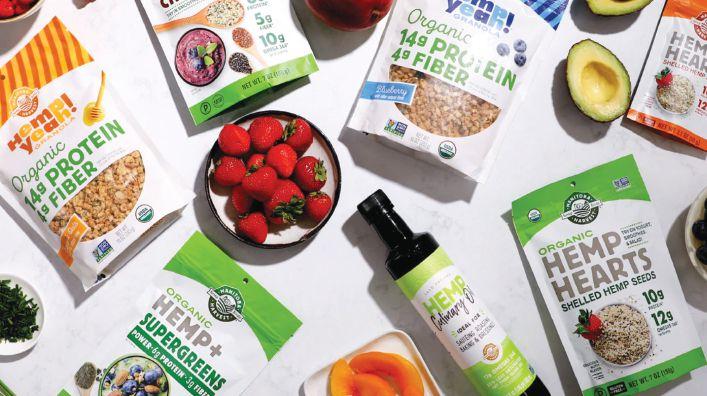
naire. This helps them learn their baseline score and prioritize areas of improvement.
Upon achieving a score of 80 or above, companies submit their B Impact Assessment for review and enter the evaluation queue, where B Lab analysts assess their eligibility for certification.
Following verification and upon necessary documentation, companies may enter the post-verification stage, sign the B Corp agreement, and achieve certification.
To maintain the certification, companies must re-certify every three years and pay the annual certification fee.
“Every company, whether they get certified or not, should at least ask themselves all those questions. You cannot ask yourself 400 questions and not be changed,” said O’Leary.
Why should you do it?
“Being a good brand isn’t necessarily going to make everyone pay attention to you. But being a good brand, and being a good storyteller is that sweet spot,” explained O’Leary.
However, the benefits of B Corp certification extend far beyond mere recognition. By joining the B Corp community, businesses gain access to a global network of like-minded organizations committed to driving positive change. Moreover, B Corp certification serves as a powerful tool for differentiation, attracting mission-aligned customers, investors, and talent.
Certified B Corps in F&B
manufacturing: Manitoba Harvest Manitoba’s Manitoba Harvest has been a B Corp for a decade since January 2014.
“We became a B Corp 10 years ago... hemp is a product that really has sustainability at its core,” said Jared Simon, president of Manitoba Harvest.
Recently, the company got recertified with a score of 100.2.
“We’re (proud to get) our highest score ever. We exceeded 100, which is really hard to do. It shows continuous improvement in what we do as an organization,” Simon added.
He shared that increased reporting, transparency, and commitment to the company’s core values apart from focusing on regenerative farming helped Manitoba Harvest improve their score during the recent recertification process.
For Simon, the biggest advantage of B Corp certification is credibility, especially among employees.
“There is a huge benefit amongst our employees in being part of a B Corp. It helps us with employee retention and employee recruitment. People want to be part of something bigger than just selling a product,” he said.
Simon urged companies that are interested in pursuing B Corp certification to “rely upon other companies who are already in the space.”
“You cannot do it as a side interest. It takes financial commitment as well as commitment in terms of people who care about it and who will work on it,” he said.
Earth Group
Alberta’s Earth Group has been a B Corp since June 2018. In its latest recertification, the organization scored 101.9 points. Its motive for getting the certification was
Manitoba Harvest earned its B Corp certification in January 2014.
to display authenticity and transparency in its practices.
Matt Moreau, founder of Earth Group, found the B Corp certification process “pretty rigorous”.
“It made us look at a lot of the things that we were doing, put new policies in place and examine the way we operated as a company. We wanted to do that just to get to be able to show both consumers and corporations that we are who we say we are and what we’re doing is real,” Moreau added.
He stressed a B Corp certification was

important because many retailers are looking to create exclusive sections for products manufactured by B Corps.
Portofino
British Columbia’s Portofino got its B Corp certification a year ago in April 2023 with a score of 81.9.
Matt Cimon, president of Portofino, said that the certification is a “commitment to do better”.
“B Corp is a commitment because each



time a company recertifies, the bar goes higher. So not only do you have to show improvement, but you also now must meet higher standards,” Cimon said.
To meet the certification standards, Portofino enacted new policies, such as increasing the pool of local suppliers.
Cimon believes companies should be interested in ESG impact certifications like B Corp because “customers are looking for it.”
“They have a much better sense of





Matt Moreau (second row, right), founder of Earth Group, with children in a classroom in Sri Lanka. The company funds UNWFP’s school feeding programs.


Robert Vincent, VP of operations, said the certification represents a “badge of sustainability and honour.”
“Less than 0.5 breweries in North America are B Corp certified. We’re really proud to be among that select group of companies that are really putting sustainability first,” Vincent said.
Partake Brewing was one of the first brands to move away from plastic rings on beer cans. Additionally, its committed to purchasing a certain percentage of raw materials from within 200 km of the production facility.
Vincent advised interested companies to plan ahead.
how many of your suppliers are within 100 or 200 km of your end customer. You can’t switch suppliers overnight,” he said.
Café William
Quebec’s Café William got its B Corp certification in February 2024 with a score of 89.1.
For them, B Corp certification is akin to making a commitment to create a better company for employees and the community, said Rachel Ladouceur, senior marketing director at Café William.
what they want to buy and the environmental impact of the products they buy. It’s being driven by the consumer side of things, which ultimately is great because that’s going to make companies change what they do,” he said. “Companies that don’t begin the steps now, whether through certification or just education, are going to feel very left behind in five to 10 years as things are moving quickly. It’s hard and not something that you can do in a couple of weeks. We’re hoping to encourage other food companies to jump on board.”
Partake Brewing
Ontario’s Partake Brewing got its B Corp certification six months ago in November 2023 with a score of 81.1.
“You must prepare many years before you apply because several of the areas are things that you can’t just change overnight. For example, there’s a question in the application process that talks about
“I think it’s a way to commit and stick to your commitments. It helps you elevate your standards and make the right choice, not the easier one,” she said.
As social and environmental responsibilities increase, B Corp certification helps businesses balance purpose and profit and increase their brand value.
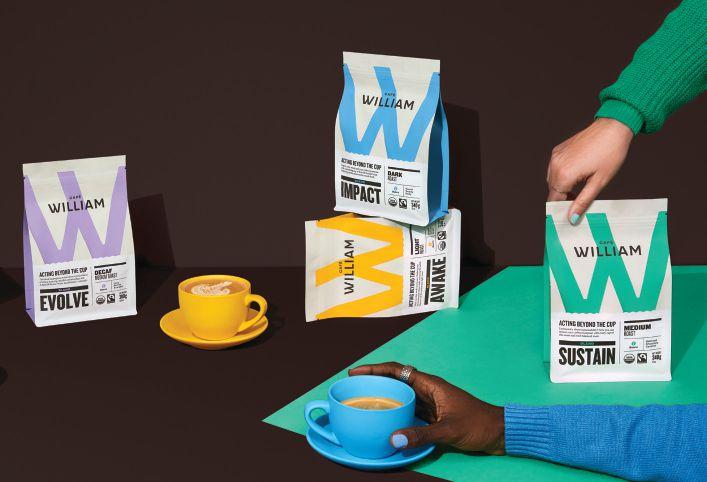
Bakery goods manufacturer Portofino started sourcing more of its ingredients locally in order to meet certain B Corp certification requirements.
Photos © Portofino Bakery; Partake Brewing; Café William
The B Corp certification is a badge of sustainability and an honour for Partake Brewing.
For Café William, the B Corp certification is akin to committing itself to creating a better company for employees and the local community.
FIBERSOL®, GLP-1 AND SATIETY
About 30% of the world’s population struggles with excess weight. The World Health Organization’s 2022 data showed this pressing concern, revealing that 2.5 billion adults (18 years and older) and approximately 400 million children and adolescents were overweight.1 Amidst this trend, the pursuit of effective weight management strategies has intensified, leading to increasing interest in GLP-1 and satiety.
Decoding GLP-1
GLP-1, or glucagon-like peptide-1, emerges as a crucial player in the intricate web of metabolic regulation. This naturally occurring hormone exerts multifaceted effects, stimulating insulin secretion and potentially suppressing appetite. After a meal, GLP-1 binds to receptors, triggering insulin release and facilitating glucose uptake by cells to regulate blood sugar levels.
Holistic Approach to Healthy Weight Loss
Achieving and maintaining a healthy weight goes beyond simple approaches focused solely on the number on the scale. It necessitates a comprehensive lifestyle approach, encompassing regular physical activity and the adoption of healthy dietary patterns.

The Role of Fibersol®
As a digestion-resistant soluble dietary fiber backed by over 30 years of extensive clinical research, Fibersol ® presents a promising path to promoting satiety and boosting GLP-1 when consumed at 10g with a meal in healthy individuals.
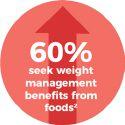

Fibersol® Research: Key Takeaways
Fibersol® has demonstrated the potential to delay hunger, increase feelings of fullness (satiety perception) and stimulate the production of appetite-regulating hormones when consumed with a meal.3 A study involving healthy subjects who ingested two doses of Fibersol® (5g and 10g) showed that the higher dose of 10g stimulated production of satiety hormones GLP-1 and PYY compared to a placebo.
The study demonstrates that the perception of fullness was accompanied by increases in appetite-regulating hormones, GLP1 and PYY when taking 10g of Fibersol® with a meal.
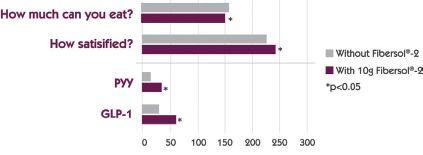

At 10g with a meal, Fibersol®:
• May delay hunger and stimulate appetite-regulating hormones GLP-1 and PYY
• May increase satiety perception
• May increase GLP-1 ~2-fold compared to control in healthy individuals
• May increase appetite regulating hormone GLP-1 ~2-fold compared to control
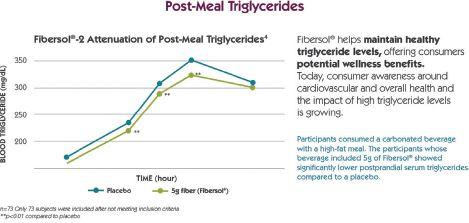
At 5-6g of Fibersol® with each meal, clinical studies have shown that Fibersol®:
• Helps attenuate the rise in blood triglycerides following the meal (that are within the normal range in healthy individuals)
• Helps retain healthy triglyceride levels
Comprehensive Wellness Benefits
Beyond its role in satiety and beneficial effects on GLP-1, Fibersol® offers additional benefits that contribute to its nutritional appeal.
Fibersol®’s resistance to digestion ensures its passage to the large intestine, where it undergoes slow fermentation by intestinal microflora. This process yields short-chain fatty acids crucial for maintaining gut health, promoting intestinal movement and enhancing mineral absorption.
As a prebiotic fiber, Fibersol® fosters the growth of beneficial gut bacteria, supporting digestive health and maintaining a healthy gut microbiome. Fibersol® is well-tolerated at up to 68g/day4, with studies demonstrating its safety and efficacy even at high daily doses, making it a suitable dietary option for individuals striving for weight management and overall wellness.
Consumers’ Ally
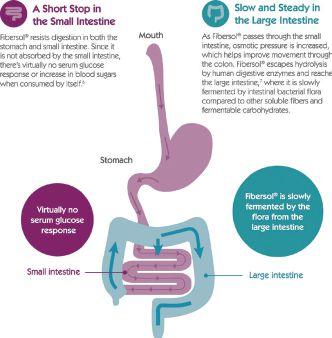
Backed by high-quality clinical studies, Fibersol® is a soluble prebiotic fiber that may promote satiety, help reduce blood sugar levels, support healthy blood triglyceride levels and support digestive health.
Discover more about how Fibersol® can be a key factor in supporting consumers’ GLP-1 and satiety needs in our latest white paper: Fibersol®, GLP-1 and Satiety. www.fibersol.com/glp-1-and-satiety
A UNIQUE functional food ingredient
Canadian-grown sea buckthorn berries are an untapped source of antioxidants — BY
RENAN DANIELSKI AND FEREIDOON SHAHIDI —
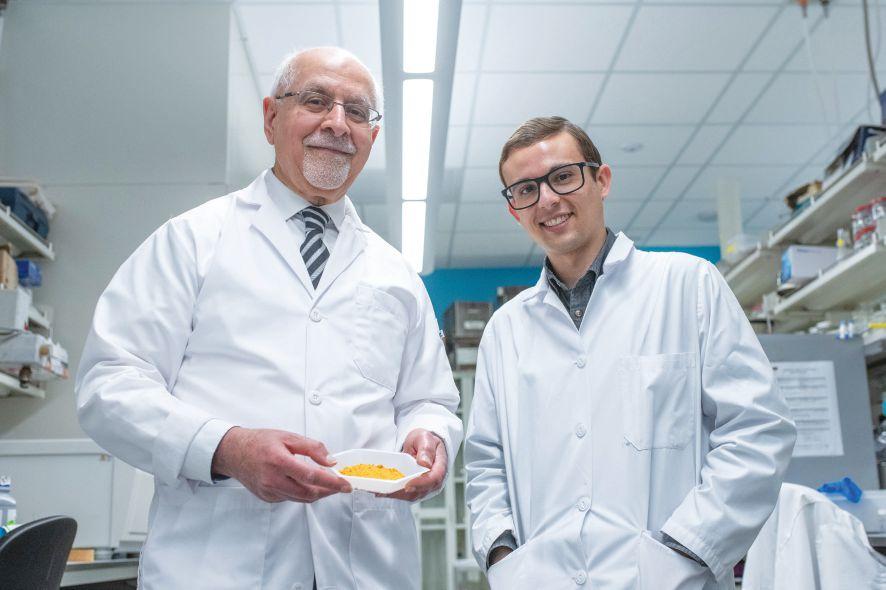
Have you ever heard of sea buckthorn?
Perhaps you have. You may even have a sea buckthorn shrub in your backyard but unsure of what it is.
Unbeknownst to you, a goldmine in the form of sea buckthorn berries may be sitting on your land waiting for the right time to come to fruition. Sea buckthorn may not be native to Canada, but it has adapted remarkably well under our climate. Its berries are packed with antioxidant compounds carrying an outstanding therapeutic po-
tential. But how much and what do we really know about the Canadian sea buckthorn? What is the best way to value sea buckthorn berries and help advance our functional food and nutraceutical industries?
The basics of sea buckthorn cultivation
Native to northwestern Europe and temperate zones of Asia, the sea buckthorn plant is a deciduous shrub that grows to a moderate height, ranging from 6 to 13 ft (2 to 4 m). Male and female plants are available, but only the female type can produce fruit. Thus, sea
Photo © Memorial University
Fereidoon Shahidi and Renan Danielski conducted a study to find out the nutritional profile Newfoundlandgrown sea buckthorn berries.
buckthorn orchards should have between seven and 12 per cent of female trees as pollinators. Moreover, shrubs should be spaced 3 ft apart from each other and 13 ft between rows. This nitrogen-fixing plant is relatively tolerant to draught but grows best in areas receiving 16 to 24 in. of precipitation. Sea buckthorn shrubs are also salt-tolerant and thrive in deep, well drained, sandy loam soil with high organic matter and between 6 and 7 pH. The plant is resistant to temperature fluctuations, tolerating from -43 to 40 C; one of the reasons for sea buckthorn to thrive in Canada.
The pollination of the female flowers generally happens in midMay and after about 100 days (end of August/beginning of September), the fruits are ripe and ready to be harvested. Sea buckthorn berries are orange, oval-shaped, and have an acidic flavour note. Their yield is around 12 to15 lb (5 to 7 kg) per plant or 1.8 to 2.2 tonnes/acre. Fruits are difficult to harvest, making it the main drawback associated with this crop. Manual harvesting is estimated to take as long as 600 h/acre, so mechanical harvesting is the preferred option. Following harvest, sea buckthorn fruits should be immediately processed or destined to commercialization (if sold as fresh berries). If necessary, they can be stored at 4 C for up to two weeks or frozen for long-term preservation.

Is it worth the effort?
For some, cultivating sea buckthorn may seem like too much effort for a relatively unknown fruit and one of the first questions to emerge is “what to do with sea buckthorn”? Selling the fresh fruit is one option, but segregating sea buckthorn into its many fractions may be more commercially feasible. These small berries can afford a multitude of products with high profit margins. As a starting point, berries can be pressed for juice extraction. With a simple centrifugation process, the juice can be clarified, affording an oil layer that corresponds to about eight to 12 per cent of
QUALITY PROTECTS .

Thermal production processes like hot filling or tunnel-pasteurization are energy-intensive and subject to limitations. Nagardo® and Velcorin® cold-fill technologies maintain quality and offer flexible production with low investment costs. Find out more under the QR code.
Sea buckthorn berries are packed with antioxidant compounds and have several application possibilities in the functional food sector.
the pulp’s volume. This premium oil is rich in omega-3 (alpha-linolenic acid, around 30 per cent) and omega-6 (linoleic acid, around 40 per cent) fatty acids, vitamin E, as well as carotenoids, natural pigments with vitamin A activity and antioxidant properties. Seed oil can also be obtained by pressing sea buckthorn seeds, yielding around 13 per cent oil, and commercialized as a high-value functional product for oral consumption or even incorporated into cosmetics due to its moisturizing properties and rich composition of anti-ageing molecules.
In the European and Asian countries where sea buckthorn industries are well-established, pulp and seed oils are the most valuable sea buckthorn products. Drinking sea buckthorn juice may take some adaptation as the berries are fairly sour, but the benefits rely on their high content of vitamin C and carotenoids. Alternative to juice extraction, the berries may either be manually or mechanically separated from the seeds. The pulp can then be frozen or dehydrated to afford a fruit powder to be sold as a functional ingredient for jams, yogurts, and desserts, among others, or even destined for direct consumption. The production of sea buckthorn wine, liqueurs, and spirits is also a promising alternative in light of the surge in fruitbased alcoholic beverages. Hence, sea buckthorn berries may be used in several other products with minimal adaptation for companies processing similar feedstocks. Besides, one of the most interesting aspects of sea buckthorn is that after obtaining its primary products (oil, juice, etc.), the residual fractions still hold considerable amounts of phytochemicals with health-promoting potential.
Nothing goes to waste
The scientific literature still lacks a robust database on the composition of sea buckthorn berries grown in North America. Climatic conditions and soil quality are

determinant for the chemical composition of fruits and other plant materials. Therefore, each location will have its unique sea buckthorn berry, even within the same country. Our research team was the first to report on the polyphenol composition of sea buckthorn grown in Newfoundland. The defatted pomace (the pressing cake from juice extraction) and seeds were analyzed for their polyphenol content and profile to determine how our sea buckthorn cultivar compares to the ones grown elsewhere.
We found Newfoundland’s sea buckthorn is mainly composed of ellagitannins and gallotannins, which are complex polyphenols, also found in strawberries and blueberries. Besides, the seeds are particularly rich in catechin, the same flavonoid found in green tea. Many of these molecules are only found in the sea buckthorn cultivated in this region. Moreover, the seeds showed higher levels of polyphenols than the flesh, demonstrating promising nutraceutical properties and opening new possibilities for the repurposing of this residual material. After detecting such a wealth of antioxidant substances in sea buckthorn’s pomace and seeds, we set out to evaluate what type of health effects these soups of bioactive compounds could potentially hold. The polyphenols present have shown the ability to reduce the activity of
Sea buckthorn oil is rich in omega-3 and omega-6 fatty acids and vitamin E.
Photo © Marina Moskalyuk / Getty
Sea buckthorn can afford a multitude of products with high profit margins. As a starting point, these small berries can be pressed for juice extraction.
enzymes involved in type 2 diabetes and obesity, while decreasing oxidative damage to LDL-cholesterol and supercoiled DNA, risk factors for heart disease and some types of cancer, respectively. Importantly, the evidence comes from in vitro studies, pending further experimentation involving animal models and humans to confirm such effects. Notwithstanding, the promising nutraceutical power of sea buckthorn berries, their derived products, and even their residues provide opportunities for cultivation and full use of sea buckthorn.
The take home message
Much work remains to be done with the Canadian cultivars of sea buckthorn. Investigating its composition was just a first step in understanding how we can embrace these small berries as a local product and make the most of them. Sea buckthorn has what it takes to be classified as a superfruit and share the same good reputation as blueberries, blackberries, and cranberries, among others. A joint effort between the functional food and nutraceutical industries and academia may lead to the popularization of sea buckthorn, increasing awareness of its health benefits, which would undoubtedly bump up consumer demand for sea buckthorn products.
Fereidoon Shahidi is a university research professor and distinguished scholar at the Department of Biochemistry, Memorial University of Newfoundland (MUN), St. John’s, and Renan Danielski is a postdoctoral fellow in Dr. Shahidi’s Nutraceutical and Functional Food laboratory at MUN. They can be reached via email at fshahidi@mun.ca and rdanielski@mun.ca, respectively.
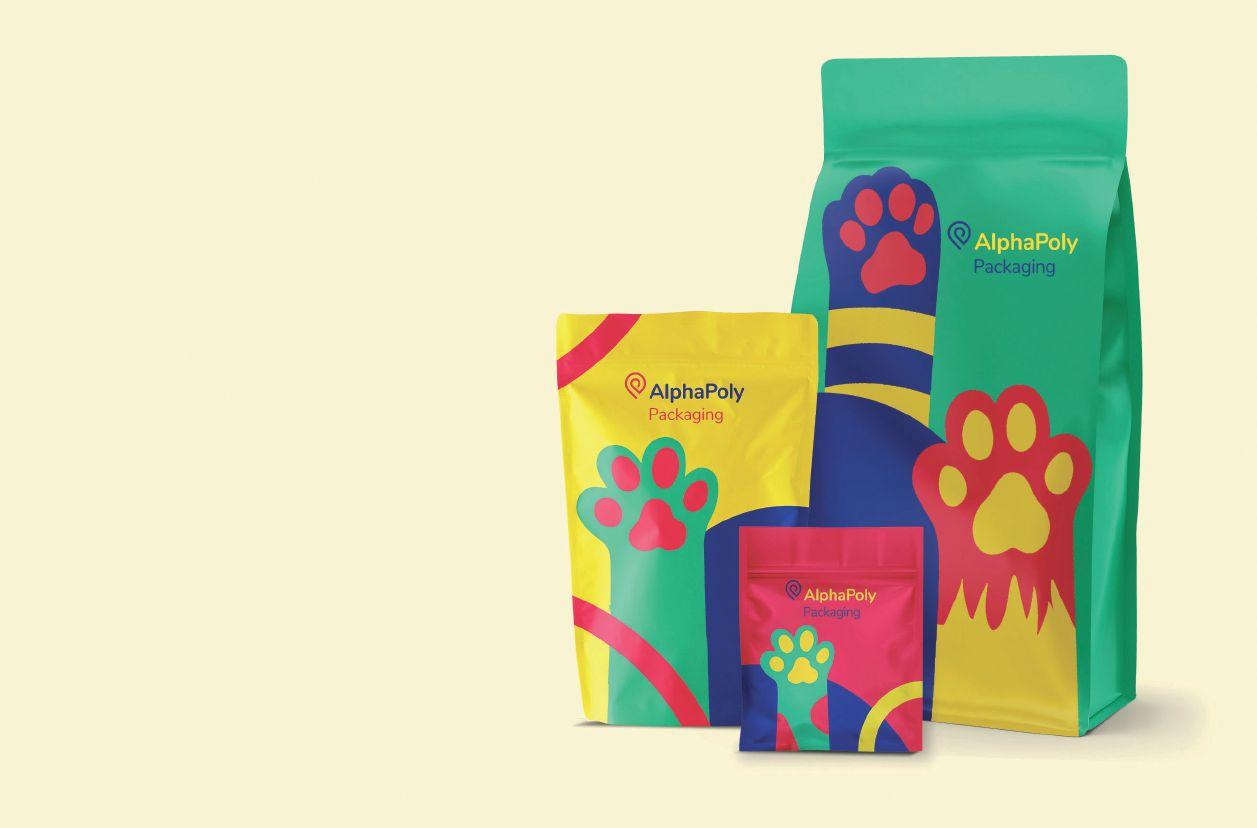
Paws
sustainable packaging

Key drivers of customer behaviour
Birgit Blain
What compels consumers to buy, or not buy, a product? A Theory of Human Motivation by psychologist Abraham Maslow in 1943 offers us some clues.
According to Maslow, humans have five basic needs or unconscious goals that motivate behaviour: physiological, safety, belonging, esteem and self-actualization. In later years, Maslow added three need states: cognitive, esthetic and transcendence.
His theory is based on a hierarchy, often illustrated as a pyramid showing that each need must be satisfied in sequence before the next one comes into play. However, the hierarchical nature of the theory has been questioned by contemporary psychologists largely because every individual has a unique approach to prioritizing, pursuing, and fulfilling their basic needs.
Physiological needs
These are the physical necessities, the basic elements of life that enable us to survive: air, food, water, shelter, sleep. If any of these are lacking, humans cannot survive.
For those who are struggling to exist, their primary motivation would be to fulfil those needs by doing whatever is necessary. Luxuries are not an option.
Socially responsible brands can play a role in alleviating struggles for survival by providing access to nutritious food, water, and shelter.
Safety
In these uncertain times, threats to our security are numerous: high inflation, rising interest rates, the housing crisis, unemployment, political instability, and natural disasters, among others. In an unsafe environment it’s natural to seek out remedies, consciously or unconsciously, that instil a feeling of security.
As much as a roof overhead, a line of credit and a child’s ‘blankie’ can create a safe environment, so too can comfort food and sustenance meeting the nutritional requirements to support physical and mental health. This includes special dietary needs that are medically necessary due to allergies or disease.
Belonging
We humans are social creatures for whom relationships and connections are paramount. There is an emotional need for bonding with family, friends, romantic partners and feeling like part of a group or community. It all boils down to feeling
accepted and loved.
In the absence of a feeling of belonging, we search for other ways to fill the void. Hence, the prevalence of social media.
Marketers should be wary as social media can be an enabler or a bane, with negative aspects such as cancel culture and public shaming causing irreparable harm.
Sharing common likes, philosophies, thoughts, and feelings can create bonds. Similarly, food is sharable and advertising is rife with sharing occasions—be it chocolate, pizza or fries—that lead to a rewarding smile or hug. Does your brand provide opportunities for sharing and how can the experience enhance your customers’ need for belonging?
Esteem
With an inward focus on satisfying one’s self-image or ego, humans strive to gain respect, status, and recognition. By feeding the ego, people develop a positive image of themselves and feelings of self-worth and pride.
There are many routes to building self-esteem, among them:
• practising self-care, good nutrition, exercise and sufficient sleep;
• setting and achieving goals;
• earning rewards for accomplishments;
• volunteering to help the less fortunate; and
• attaining respect and status in the community.0
To be enablers, brands can help consumers look and feel their best, raise their self-image, fulfil their aspirations and feel recognized, appreciated and respected.
Self-actualization
The ultimate basic human need is achieved by reaching one’s full potential, self-fulfilment, finding meaning and purpose, and a state of well-being. What role can brands play to help their customers achieve self-actualization?
The theory of human motivation adds a different dimension to marketing. A good understanding of motivation provides an opportunity to influence buying behaviour and gain customer loyalty.
As a CPG food consultant, Birgit Blain helps clients think strategically to build a sustainable brand. Her experience includes 17 years with Loblaw Brands and President’s Choice. Contact her at birgit@bbandassoc.com or learn more at www.bbandassoc.com

RAW, FROZEN TREATS
BIG COUNTRY PET COMPANY RESPONDS TO THE PREMIUMIZATION DEMAND WITH UNIQUE OFFERINGS PG. 26

LEADING THE PACK
with frozen food
From humble beginnings in a home kitchen, Big Country Pet Company now serves a vast market
— BY TREENA HEIN —
It’s been another incredible year for Big Country Pet Company (Smithville, Ont.), which is currently transitioning from its original name of Big Country Raw to better reflect its wide range of offerings.
Twelve years in, the firm now has its cat and dog food in over 1,500 retail stores, serving over 100,000 customers. However, like many Canadian food companies, it started in the smallest possible way—in the family kitchen. Geraldine and Rob Brouwer were a typical young couple with young children, she in HR, he in engineering. When they started making raw food for one of their dogs, family and friends wanted some too, kicking off a huge, unforeseen adventure.
“Running such a large company is something we’d never expected,” Geraldine Brouwer says. “We’ve had double-digit growth every year. We moved into a new 25,000-sf facility in 2019, and immediately expanded. We’re adding another one now, which will take us to 50,000 sf.”
The company now employs 183 people at its plant and main distribution centre, and its distribution hubs in Calgary and Ottawa. There are plans to open a distribution centre in Vancouver.
Product expansion
Big Country began with fresh, raw frozen food: a combination of meat, bone, organ meat, fruits and vegetables and a vitamin-mineral mix. It also offers formulas with only meat, organs, and bone. About 85 per cent of sales are dog food, but their raw cat food sales are currently experiencing tremendous growth.
In September 2023, the firm introduced a frozen, gently cooked dog food under the brand name Caravan.
“It’s for small dogs that aren’t keen on raw food, and for customers who aren’t quite comfortable with raw,” Brouwer says. “This category is definitely growing. We want to be innovative and bring the best products to market, and we saw we could offer a cooked food that’s better than anything available.”
The Big Country team also prides itself on using high-quality ingredients and honing production to ensure the end product has perfect consistency. They’ve found vacuum-sealed packaging critical to achieving a long shelf life.
Standing apart
However, the aspect that most distinguishes Big Country from competitors in Brouwer’s view is its educational efforts with both consumers and industry members.
“There were concerns raw food wasn’t safe or complete in nutrition, but we’ve come a long way,” she notes. “We invest a lot of effort on social media and through media outlets and influencers.
Big Country Pet Company prides itself on offering minimally processed

I think pet food store owners and staff also tend to be really well informed now. We also have a big customer service team ready to answer questions directly through phone calls and several other ways. That’s really important.”
Parallel to this education effort has been a focus on changing labelling regulations. Brouwer explains that the word ‘raw’ is being wantonly abused in the Canadian pet food space and it needs to be properly regulated. There are also huge differences in raw pet food manufacturing.
“There are about 10 companies in Canada making raw frozen cat and dog food, but only four that I know of are HACCP-validated and use contingencies like bacteriophages to protect food safety. It is deeply concerning for us and other HACCP-compliant companies that we are all grouped together in terms of quality control,” she explains.
At this point, work is ongoing to ensure the term, ‘raw,’ is used exclusively on minimally processed raw food. Additionally, the Brouwers are working on obtaining membership with the Pet Food Association of Canada (PFAC) to effectively advocate for safe and balanced raw pet food.
Pivoting and plans
As successful business owners do, the Brouwers have innovated where necessary and continue to pursue new opportunities.
For example, back at the start of 2023, sales started to slow
Big Country Pet Company sells its cat and dog food in over 1,500 retail stores, serving over 100,000 customers.
down. Brouwer thought about how she purchases in bulk for her family (she and Rob have six kids) and started working on a bulk product for dogs. By July, she had introduced a XL Bistro box and sales immediately rebounded.
“We took our main proteins – chicken, turkey and beef –swapped some of the veggies and fruit without affecting nutrition levels, made a larger patty and squeezed portions into a big box with stripped-down packaging,” she explains proudly. “It’s 30 lb for $100, which is a very good value for the same high quality.”
On the subject of costs, distribution expenses have always been kept low with a direct distribution model. There was actually no other option at the start for Big Country because existing pet food distributors were not equipped to handle frozen products. Big Country had to deliver directly to stores, a move which not only saves costs, but also enables them to ensure quality (temperature and handling) is maintained. It’s also provided an effective way to gather feedback from retailers and consumers.
Big Country also offers a range of other products such as Frozen Goat (frozen goat’s milk yogurt snacks for dogs), supplements and chews under the brand name Thrive.
Big Country is also toying with the idea of exports.
“We get calls daily from the U.S. asking if our products are available there,” Brouwer says. “Many retailers there are very excited, so we’re making our move. There are some raw food companies in the U.S., but there’s a place for us there. While we cannot currently export our product there due to existing laws, we hope that will change, and in the meantime, we’re planning to partner with a U.S. co-manufacturer. The market there is very different than Canada, with a lot of variability in regulations and distribution models from state to state. We’re hoping to start with regional distribution in the northeast.”
Meanwhile in Canada, double-digit growth continues, and the Big Country team keeps getting messages from customers about how raw food has improved their pets’ health and quality of life for the better.
“That was our reason for starting this business, to give pets longer and healthier lives,” Brouwer says. “It’s a privilege to keep doing that.”
Barks&bites
Petcurean reduces GHG by 40 per cent
Petcurean’s third annual Sustainability Impact Report shows the company achieved a 40 per cent reduction in Scope 1 and 2 emissions, surpassing its 20 per cent goal. Petcurean decreased waste-tolandfill by 83 per cent and introduced recyclable packaging for select products. Initiatives like sourcing renewable energy and introducing insect-based pet food also contributed to achieving the company’s sustainability goals.

Hill’s Pet Nutrition sued for alleged fraud
Wolf Haldenstein Adler Freeman & Herz LLP files a major class action lawsuit against Hill’s Pet Nutrition, accusing the company and affiliated veterinarians of orchestrating a scheme to falsely link grain-free dog foods to canine heart disease, dilated cardiomyopathy (DCM). They are claiming US $2.6 billion in damages, which is the largest in the pet food industry’s history. The suit claims that Hill’s manipulated data influenced an FDA investigation, and spread misinformation, causing panic and financial harm to pet food

companies like KetoNatural. Hill’s has, however, denied the allegations.
General Mills acquires European pet food brand
General Mills completes the acquisition of Edgard & Cooper, a European premium pet food brand. This move aligns with General Mills’ Accelerate Strategy, which prioritizes its core markets, global platforms, and local brands to increase profits. Edgard & Cooper brings substantial retail sales and omnichannel distribution capabilities to General Mills. Established in 2016, Edgard & Cooper had an estimated 2023 retail sales of more than €100 million across 13 markets. Headquartered in Kortrijk, Belgium, Edgard & Cooper will be a separate operating unit led by its three founders, Koen Bostoen, Louis Chalabi, and Jürgen Degrande, with its financial results consolidated into General Mills’ International segment.
Novel and functional pet food ingredients
Angelique Myburgh, nutrition and development specialist with pet food manufacturer Montego Pet Nutrition,

presented novel and functional ingredients in animal food during a presentation at Petfood Essentials 2024, held earlier this year in Kansas City, Miss. Montego Pet Nutrition uses springbok (Antidorcas marsupials) as a novel protein source in its dog food. Springbok lives in south and southwest Africa and is considered as a species of least concern. Myburgh also highlighted the health benefits of Lion’s mane mushrooms.

Ollie joins Van Leeuwen to launch doggy ice cream
Ollie, a human-grade fresh dog food brand, partners with Brooklyn-based Van Leeuwen Ice Cream to introduce doggy ice cream in peanut butter and banana-flavoured pints for pups. The companies described the treats as sweet and salty. The product will be available at Van Leeuwen scoop shops across the U.S., online and in-store at Petco stores,
Photos © Petcurean; Davizro / Getty; Pedro Carrilho / Getty; Ollie

Barks&bites
and online for Ollie subscribers. To celebrate, the companies are having free ice cream truck events in New York City, Los Angeles, and San Diego this summer.

Ÿnsect secures AAFCO approval for mealworm proteins
Ÿnsect receives the Association of American Feed Control Officials’ (AAFCO) authorization for the commercialization of defatted mealworm proteins (Protein70) in the United States after two years of evaluation.
Ÿnsect conducted a six-month study to demonstrate the nutritional benefits of defatted mealworm flour. The company claims Sprÿng’s Protein70 reduces the environmental footprint of pet food by replacing other farmed protein sources.

Entrepreneurs
Chrissy Teigen and John Legend jointly launch Kismet Entrepreneurs Chrissy Teigen and John Legend launch Kismet, a pet lifestyle
brand offering food, treats and merchandise for dogs. Dr Kwane Stewart also joined the company as chief veterinary officer. The entrepreneurs partnered with board-certified veterinary nutritionists and expert formulators to develop dog food. The Kismet product line debuts with two dry food recipes and two treat flavours, featuring real animal proteins, superfoods, vitamins, and pre/probiotics for healthy digestion. They also offer freeze-dried chicken or beef and sweet potato nuggets.

Pet Valu launches Performatrin Culinary
Pet Valu launches minimally processed frozen nutrition for dogs, Performatrin Culinary. The raw meals contain approx. 90 per cent meat, triple-ground bones, and organs, and approx. 10 per cent fruit, vegetables, vitamins, and minerals. The meals and snacks do not contain gluten, wheat, corn, soy, artificial preservatives, colours, or flavours. It is packed in easy-to-serve, pre-portioned patties for frozen raw and zip-sealed pouches.
CULT Food Science’s Further Foods partners with Valet Seller
CULT Food Science’s subsidiary, Further Foods, partners with Valet Seller to launch its Noochies products on major online marketplaces such as Amazon, Target, Kroger, and Walmart. Valet Seller sells across more than 35 marketplace
storefronts. The partnership aligns with Further Foods’ multichannel distribution strategy. Noochies offers high-protein, nutrient-rich ingredients without relying on factory farming. It incorporates patent-pending ingredients, Bmmune and Bflora, which are animal-free and designed to enhance digestion, immune system strength, and overall pet health.

Nestle launches microbiome analysis kit
Nestle launches Petivity Microbiome Analysis Kit in the U.S., offering tailored nutrition and supplement recommendations for dogs and cats based on their unique gut profiles. By analyzing a stool sample, the kit generates a report on a pet’s microbiome and gut health. This tool uses advanced sequencing technology to provide key insights into gut integrity and microbial diversity.
Simmons Pet Food closes Canadian plant
Simmons Pet Food will close its canning facility in Streetsville, Ont., by yearend. The closure will affect approx.190 employees. The closure is part of the company’s decision to centralize production and distribution. “The Streetsville location has been an important part of our company’s history. We are deeply grateful for the hard work and dedication of all our team members in Streetsville and are fully committed to supporting them through this transition,” said Scott Salmon, president of Simmons Pet Food.
Photo © CreativeNature_nl / Getty


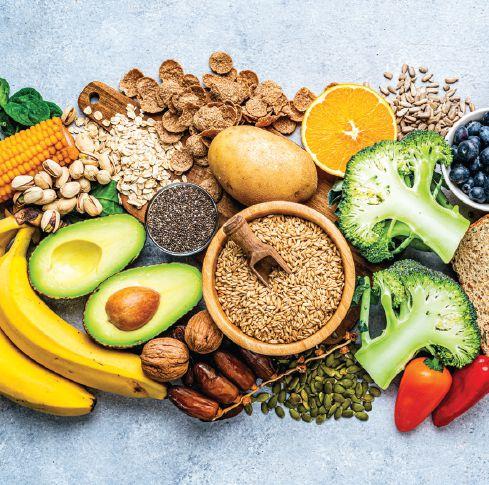

Key
Commodities
International

